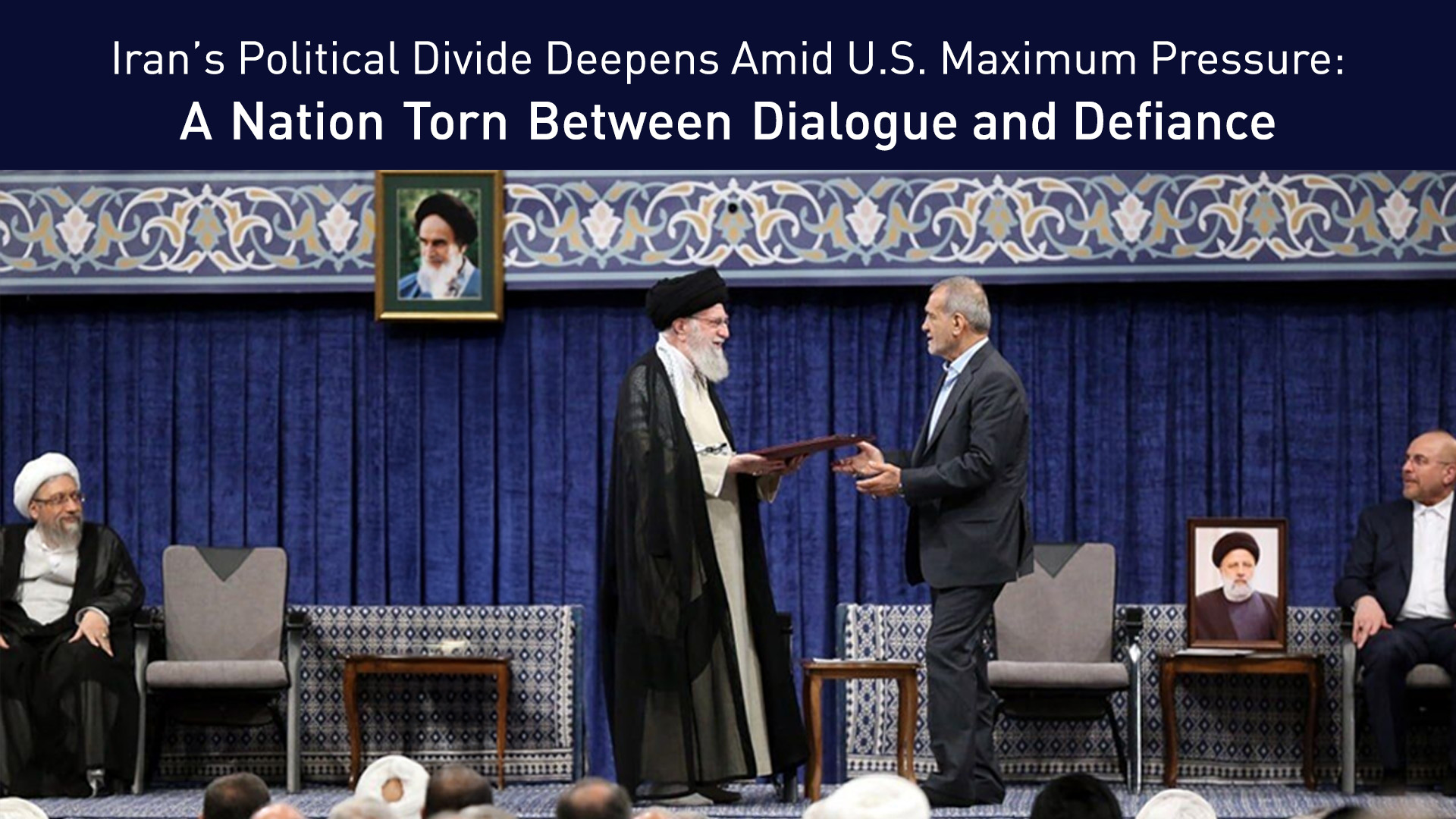Iran’s Political Divide Deepens Amid U.S. Maximum Pressure: A Nation Torn Between Dialogue and Defiance
Pezeshkian admitted that while he initially supported dialogue with Washington, he ultimately deferred to Khamenei’s firm stance against negotiations.

ERBIL (Kurdistan24) – Iran’s President Masoud Pezeshkian has acknowledged that he has shifted his stance on negotiations with the United States to align with the position of the Leader of the Islamic Revolution, Ayatollah Seyyed Ali Khamenei.
This internal rift within Iran’s leadership comes as U.S. President Donald Trump enforces his administration’s "maximum pressure" campaign, further crippling Iran’s economy and intensifying political divisions in Tehran.
Speaking in an open session of Parliament on Sunday, Pezeshkian admitted that while he initially supported dialogue with Washington, he ultimately deferred to Khamenei’s firm stance against negotiations. “I believed that it would be better to engage in dialogue, but the Leader of the Revolution stated that we will not negotiate with the United States, and I also declared that we will not negotiate with the United States,” Pezeshkian stated. However, he acknowledged that Iran must still find ways to address its economic struggles.
This reaffirmation of Khamenei’s hardline stance comes at a critical time. Since returning to the White House in early 2025, President Trump has aggressively reinstated economic sanctions aimed at halting Iran’s oil sales and further isolating the country from the global financial system.
These measures have pushed Iran into an economic crisis, fueling internal disputes among top officials. Some, like Pezeshkian, have advocated for negotiations as a means of economic relief, while hardliners argue that any engagement with Washington would be a sign of weakness.
Rising Economic Pressures and Political Divisions
Iran’s economy, already suffering under years of sanctions, is facing even greater strain under Trump’s pressure campaign. The Iranian rial has plummeted, inflation has surged, and access to critical goods and financial resources has been further restricted. This economic squeeze has fueled growing tensions among Iran’s ruling elite, dividing them between those seeking a diplomatic resolution and those committed to resisting U.S. influence.
In a speech on February 7, Khamenei reiterated his opposition to engaging with Washington, arguing that negotiations with the U.S. do nothing to solve Iran’s problems. “Some pretend that if we sit at the negotiating table, it would solve certain problems, but the reality that we must correctly understand is that negotiations with the U.S. do not have any effect on solving the country’s problems,” he said. Echoing these sentiments, Pezeshkian later accused the U.S. of not genuinely wanting negotiations but rather seeking Iran’s submission.
Despite these statements, Pezeshkian has also hinted at the necessity of finding solutions beyond outright defiance. “We should not be afraid of sanctions,” he stated in a recent address while also acknowledging the challenges facing Iran’s economy. “Some say there is no alternative but to negotiate with them [the United States]. We did not say we would not negotiate, but we are not due to give in to bullies.”
Trump’s Maximum Pressure Campaign Returns
During his first term, President Trump withdrew from the 2015 nuclear deal (JCPOA) and imposed sweeping sanctions on Iran, targeting its oil exports and financial institutions. While the previous U.S. administration under President Joe Biden sought to revive diplomatic efforts, Trump’s return to office in 2025 has reversed that approach. His administration has doubled down on sanctions, aiming to force Iran into compliance by isolating its economy and cutting off its revenue streams.
Unlike the Biden administration, which pursued indirect negotiations and sought compromises, Trump has taken a more hardline approach, viewing economic warfare as the key to bringing Iran to the negotiating table. This strategy, however, has not only exacerbated Iran’s economic crisis but also intensified internal divisions among its leadership.
Under Trump’s renewed policies, Iran’s ability to use Iraq as an economic lifeline—previously a critical means of circumventing sanctions—has been significantly restricted. In the past, Iranian-backed groups and business networks used Iraq to funnel money and evade U.S. restrictions, but Washington has now placed tighter controls on financial transactions and increased pressure on Baghdad to sever economic ties with Tehran. As a result, Iran is finding it increasingly difficult to sustain its economy, leading to heightened tensions between moderates and hardliners within its government.
The Future of U.S.-Iran Relations
With Trump back in office and his administration continuing to escalate economic and diplomatic pressure, Iran’s leadership faces an uncertain future. The deepening economic crisis, combined with internal political infighting, has left the country at a crossroads. While some officials argue that negotiations are inevitable, Khamenei’s firm stance suggests that any potential diplomatic engagement will remain unlikely as long as the current administration in Washington pursues maximum pressure.
As Iran grapples with mounting economic woes and a divided leadership, the question remains: Will Tehran find a way to withstand Trump’s renewed campaign, or will internal fractures push the country toward a reluctant negotiation? The coming months will be critical in shaping the trajectory of U.S.-Iran relations and determining whether Iran’s leadership can withstand the intensifying pressure or be forced into a strategic recalibration.
